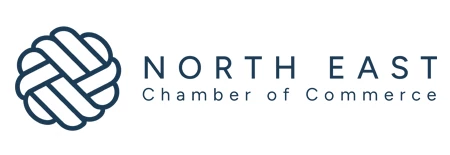Partner Article
Technology and Construction Goes Hand In Hand
In every aspect of life right now, technology has been incorporated. Since then, in each and every cranny of developing nations, it would be impossible not to see modernization and the use of computers. In America, the existence has been from late 19th century as well as in Europe. In Asia, developing cities like Tokyo, Japan, Singapore and China has been in the trend. Same goes for the construction and infrastructure industry. Even manual labor has been evolving to the use of machineries and computer.
Even when the construction industry has been adamant to change, builders are now beginning to be dragged into the 21st century by the need to collaborate more closely with their more IT-savvy colleagues, the architects and engineers responsible for the ideas behind their work. Even us, Cedar Capital Group, a company which expertise includes selling and leasing capital equipment has to take advantage of technology for the distribution of our products and the expansion of our business.
Laptops are gradually making an appearance alongside the hard hats of the building site. Is this just keeping with the evolving times or are there any other issues that drive the industry to modernization?
Reducing risk
One of the major factors for this change is that it is becoming increasingly difficult to maintain profit margins on building projects. Mindful of high-profile project delivery delays, many commercial or public sector clients have introduced financial penalty clauses in case deadlines are missed. And on top of that, there are skill shortages combined with increased competition for land.
Yet often, profits are eaten away by practical issues - delays in receiving drawings, use of outdated data, inaccuracies caused by human error. In some cases of global projects, it is easier to use the latest in technology to bring help from abroad.
As a result, the whole of the architecture, engineering and construction industry is looking for ways to reduce risk and maintain its bottom line. On a day-to-day level it is also struggling with the need to communicate and review project drawings and share proliferating number of associated documents that are usually too large to send by e-mail.
Available on-demand
Communication with subcontractors is vastly improved, becoming more instantaneous, reliable and trackable. Integration with design software means builders can easily update and publish drawings and make them available to their subcontractors, resulting in a largely paperless process. The need to share with contractors who do not use Cad is addressed by the use of DWF files, which enable sharing and viewing of 2D and 3D files without their native programs. Systems and software are also installed to prevent scams to hack on the ongoing project.
This was posted in Bdaily's Members' News section by Cedar Capital Group Japan .








 A game-changing move for digital-first innovators
A game-changing move for digital-first innovators
 Confidence the missing ingredient for growth
Confidence the missing ingredient for growth
 Global event supercharges North East screen sector
Global event supercharges North East screen sector
 Is construction critical to Government growth plan?
Is construction critical to Government growth plan?
 Manufacturing needs context, not more software
Manufacturing needs context, not more software
 Harnessing AI and delivering social value
Harnessing AI and delivering social value
 Unlocking the North East’s collective potential
Unlocking the North East’s collective potential
 How specialist support can help your scale-up journey
How specialist support can help your scale-up journey
 The changing shape of the rental landscape
The changing shape of the rental landscape
 Developing local talent for a thriving Teesside
Developing local talent for a thriving Teesside
 Engineering a future-ready talent pipeline
Engineering a future-ready talent pipeline
 AI matters, but people matter more
AI matters, but people matter more